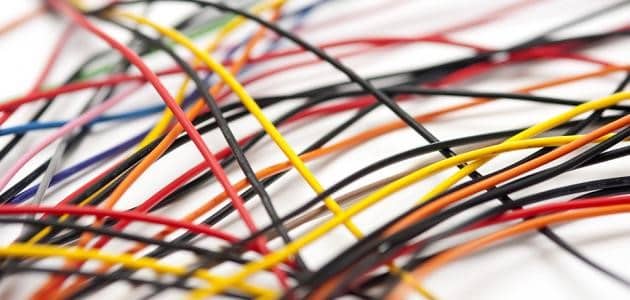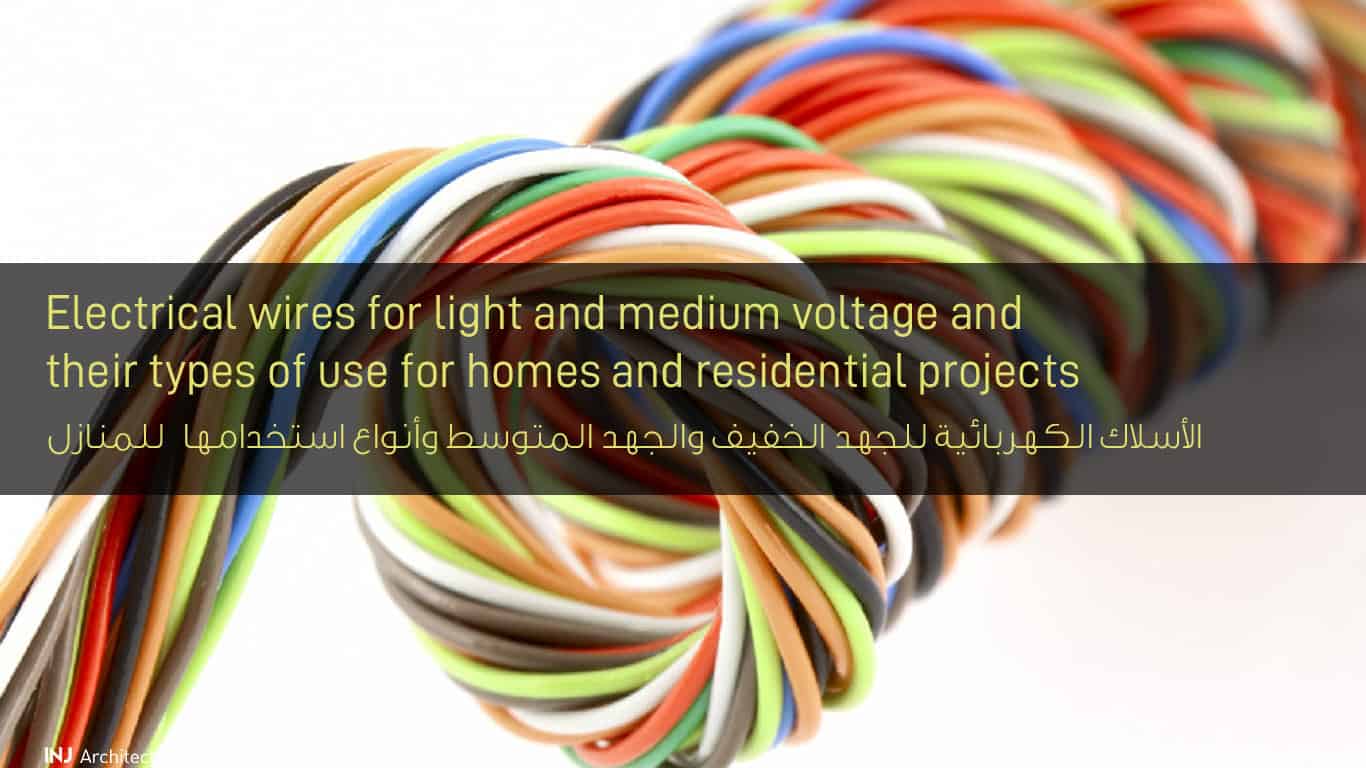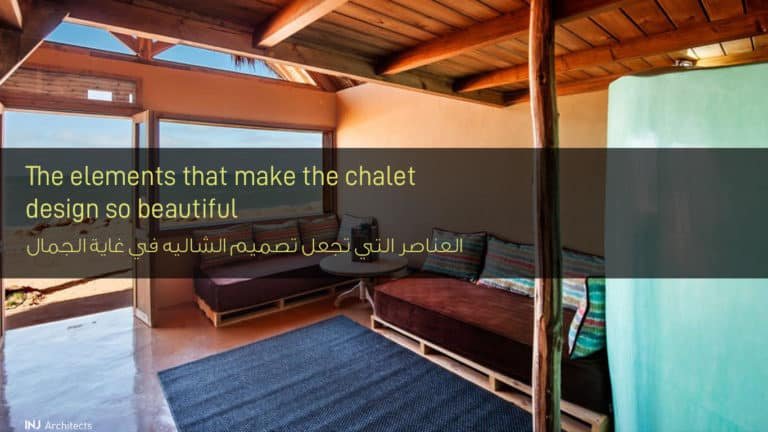Electrical wires for light and medium voltage
Electrical wires for light and medium voltage and their types of use for homes and residential projects
Electrical wires: It is a physical path that is transmitted through the transmission of signals and the energy emitted to it by the physical property (the conducting field) that is characterized by it, where the wires are made in general from metals, especially copper and aluminum.

Types of electrical wires
Single conductor electrical wires
It is considered one of the most common and widely used types of wires and its uses vary in proportion to each type of it, including stranded wires which are flexible wires and are widely used in mobile phone charger wires, among them also the solid wires, which are solid wires characterized by being coated with high temperature resistant nylon and used in Long distance connection.
– Multiple conductor electrical wires
The multi-conductor wire consists of a live wire, ground wire and neutral wires grouped together in one plastic wrap, and multi-conductor wires are used behind the walls to connect heavy devices such as washing machines.
– Metal wire
The formation of metal wires is close to the formation of multi-conducting wires according to the type of envelope surrounding the neutral wire group. The wires in the metal wires are a spiral metal casing made of aluminum and is used in large applications such as industrial applications because of its high ability to withstand heavy pressures, but is considered more The species is expensive due to the materials used in its manufacture.
Low Voltage Electrical Wires
Low pressure wires are usually used in electrical circuits, which require less than 50 V voltage, and are the most popular and popular (electric wires) that illuminate landscapes, which are usually used for decorative purposes, door bells, and thermostat wires.
Mostly their sizes are from 12:22 gauge, and also low-voltage electrical wires are often insulated, the wires for phones, especially landline and Internet lines, are low-voltage.
Medium voltage electrical wires
How to bury low-voltage cables and medium-voltage cables in the soil.
Electrical conduction cables must be buried at a depth of 80 cm or more in the soil, and this is done by:
Make a hole 80 centimeters deep or more in width, to show the cables to be buried.
Under the cable, there should be fine sand to protect it, so a layer of fine sand approximately 10 cm thick is placed.
Another layer of fine sand is spread over it so that it will not be exposed to rough soil and gravel, which will damage it.
Then we put bricks on top of the sand layer along the cable to keep it, so that whoever wants to dig later knows that there is a cable in this place. Then we complete backfilling the hole with dirt that was removed from it before and then put a yellow tape as an indication of the presence of the cable.
Uses of electrical wiring in homes and residential projects
Single wires are used for basic lighting circuits, the wire section is not less than 2 and a half milliliters and also used for fan circuits and bells.
Single wire up to 6 mm section used in special power outlet circuits.
Single wires, cross section, 6 mm for telephone circuits.
Wires crossed from 2 to 6 mm should be used for all circuits for the power outlet for heaters and adaptations.
Flexible and well insulated copper electrical wires must be used.
The number of electrical wires in one pipe must not exceed the maximum limit.
Wires must be tested before plugging in.
You must choose the appropriate current for the strength of the electrical wires.
Browse also: Types of water tanks for ground tanks and methods of installing them






